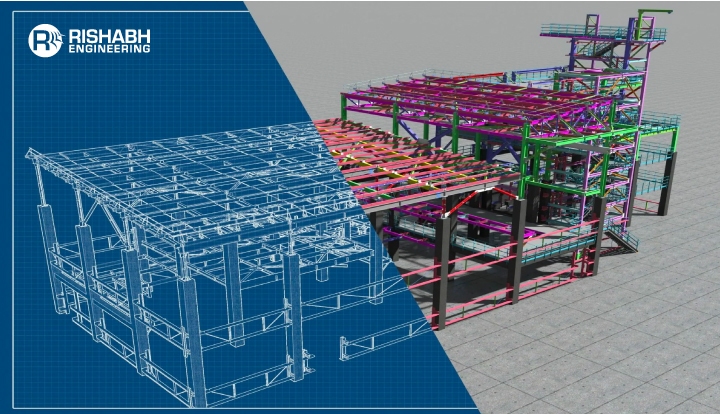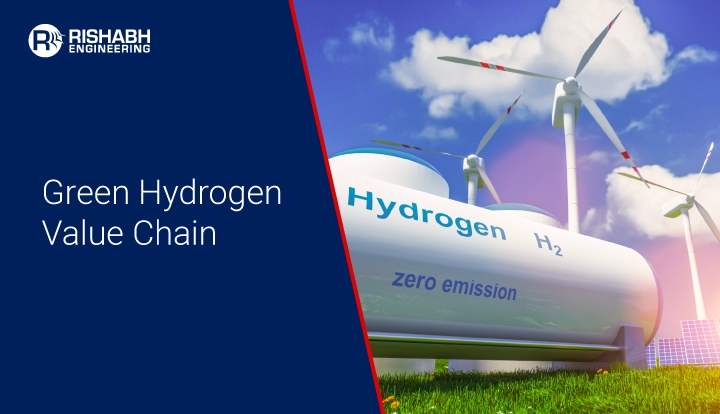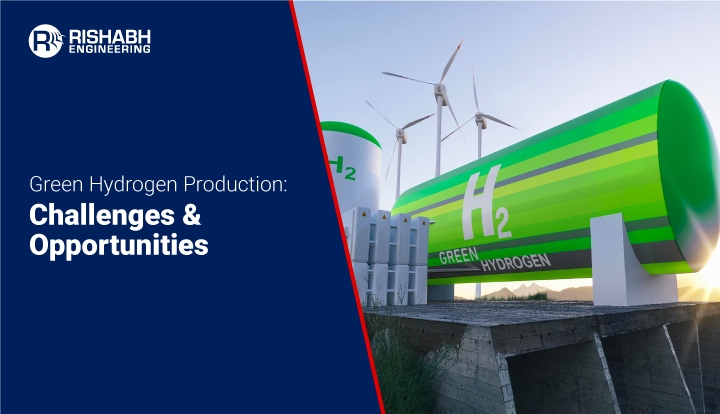
Detailed Engineering Considerations for Project Success
Engineering projects today require meticulous planning and execution across various phases as they serve as the cornerstones of success. As part of this, one of the most critical stages is detailed engineering –where the project blueprint takes shape and becomes a reality. It is, therefore, considered to be the project’s backbone. It serves as the bridge between conceptual design and actual construction while encompassing a multitude of tasks that are vital for the project’s success. Further, it helps ensure seamless alignment of resources to achieve the desired outcome.

With this blog, let’s delve into the essentials of detail engineering while exploring each facet and understanding their significance in creating robust and efficient projects.
But before that, let’s try to understand the basics. Let’s get started!
What is Detailed Engineering Design?
Detailed engineering design refers to comprehensive and precise technical drawings, calculations, and documentation, primarily 3D models that are conceptual plans for the construction and implementation phases. It would involve specifying equipment, materials, layouts, and operational details to ensure accurate execution. This model can be used as a virtual walk through for interference/ clash checks to simulate and test your solution/system’s performance before constructing it for real-world usage.
What Does It Mean To Have A Detail Engineering Team?
An engineering team signifies a group of skilled professionals with diverse expertise collaborating to solve complex problems, design innovative solutions, and execute projects. This team collectively combines various technical disciplines, such as process, mechanical, instrumentation, electrical, civil, structural, architectural, and more, to achieve common goals. They leverage their specialized knowledge, experience, and creativity to efficiently analyze, plan, and implement projects. Effective communication, collaboration, and a shared vision are crucial for an engineering team’s success, as they work cohesively to tackle challenges, optimize processes, and deliver high-quality results in the field of engineering and technology.
A team can consist of many people from different backgrounds with varying skills. However, at each stage, there needs to be one person designated as a project manager who has overall responsibility for coordinating the various activities necessary for completing a specific portion of your design.
Listed below are some of the critical detailed engineering and design considerations;
- Hydraulic Calculations and Equipment Sizing: The heart of any industrial process lies in its hydraulic system. Accurate hydraulic calculations and equipment sizing guarantee efficient operation and resource utilization. Engineers must meticulously analyze fluid flow rates, pressures, and components to ensure optimal performance, reducing the likelihood of operational bottlenecks.
- Piping Layout and BOM Generation – Orchestrating the Flow: A well-orchestrated piping layout forms the circulatory system of a project. Detailed engineering necessitates the design of piping networks that account for safety, efficiency, and ease of maintenance. Moreover, the generation of a Bill of Materials (BOM) streamlines procurement, ensuring that every component required for the project is accounted for.
- Datasheets and Specifications: Considered as the blueprint of detailed design precision, it helps engineers thrive on precision. Datasheets and specifications outline the requirements for every component, providing a comprehensive guide for manufacturing and procurement teams. These documents cover many details, from material specifications to performance expectations, ensuring consistency and quality throughout the project.
- 3D Modeling – Bridging Imagination and Reality: Modern engineering wouldn’t be complete without the power of 3D modeling. It allows engineers to visualize the project, identify potential clashes, and optimize spatial utilization. By integrating various systems into a coherent 3D model, engineers minimize errors and save time during construction.
- Detailed Layout Drawings, PFDs, and P&IDs: Clear communication is paramount with any detailed design drawings endeavor. Detailed Layout Drawings, Process Flow Diagrams (PFDs), and Piping and Instrumentation Diagrams (P&IDs) serve as the lingua franca between engineers, designers, and stakeholders. These visual representations offer a universal understanding of the project’s intricacies, minimizing ambiguity and enhancing collaboration.
- Asset Data Management: Asset data management involves creating a digital twin of the physical infrastructure, encompassing detailed records of components, maintenance schedules, and performance history. This holistic approach ensures the project’s sustainability and facilitates informed decision-making for maintenance and upgrades.
- Document Management: In the information era, document management of data is crucial. Efficient categorization, storage, and retrieval of project documents and data are vital for maintaining order and accessibility. This practice reduces the chances of critical information being lost or misinterpreted, safeguarding the project’s integrity.
- Structural Stability Studies: Structural stability studies evaluate the integrity of the project’s framework, ensuring it can withstand various loads, forces, and environmental conditions. These studies are essential for both safety compliance and the prevention of costly failures down the line.
- Procurement Support: It involves collaborating closely with suppliers to ensure timely delivery of components without compromising quality. Effective procurement strategies mitigate delays and budget overruns.
At Rishabh Engineering, we offer detailed engineering design services that involve the creation of drawings, specifications, and other documents. It uses precise terminology to define an item or system so that it can be manufactured correctly. It also allows the construction of models, prototypes, and testing before production begins.
Listed below are some of the detailed design and engineering best practices we follow;
- Internal robust Quality Control SOPs
- Identifying waste and errors to create an improved, efficient work process
- Using Earned Value Management (EVM) technique – Schedule Performance Index (SPI)
- Identify conditions within detailed engineering work processes, reducing project schedule variabilities/ uncertainties
- Examine Work Completed/Work Planned Ratio – measuring project schedule
- Documenting lessons learned after project closure
Conclusion
In conclusion, detailed engineering considerations form a comprehensive framework engineers and designers must master to steer projects toward success. From the intricacies of hydraulic calculations to the meticulous documentation of every specification, each element contributes to the project’s overall performance, safety, and longevity. With the integration of advanced technologies like 3D modeling and asset data management, detailed engineering practice continues to evolve, setting the stage for even more efficient and innovative project executions. Embracing these essentials paves the way for engineering triumphs that stand the test of time.
Are You Looking To Elevate Your Engineering Projects?
Explore our detailed engineering services and best practices now for unmatched project excellence.
Related Blogs
Related Blogs
Navigating the Green Hydrogen Value Chain
Green hydrogen is a powerful contender for a more sustainable…
Green Hydrogen Production Challenges & Solutions
Hydrogen, mainly green hydrogen, has emerged as a beacon of…


